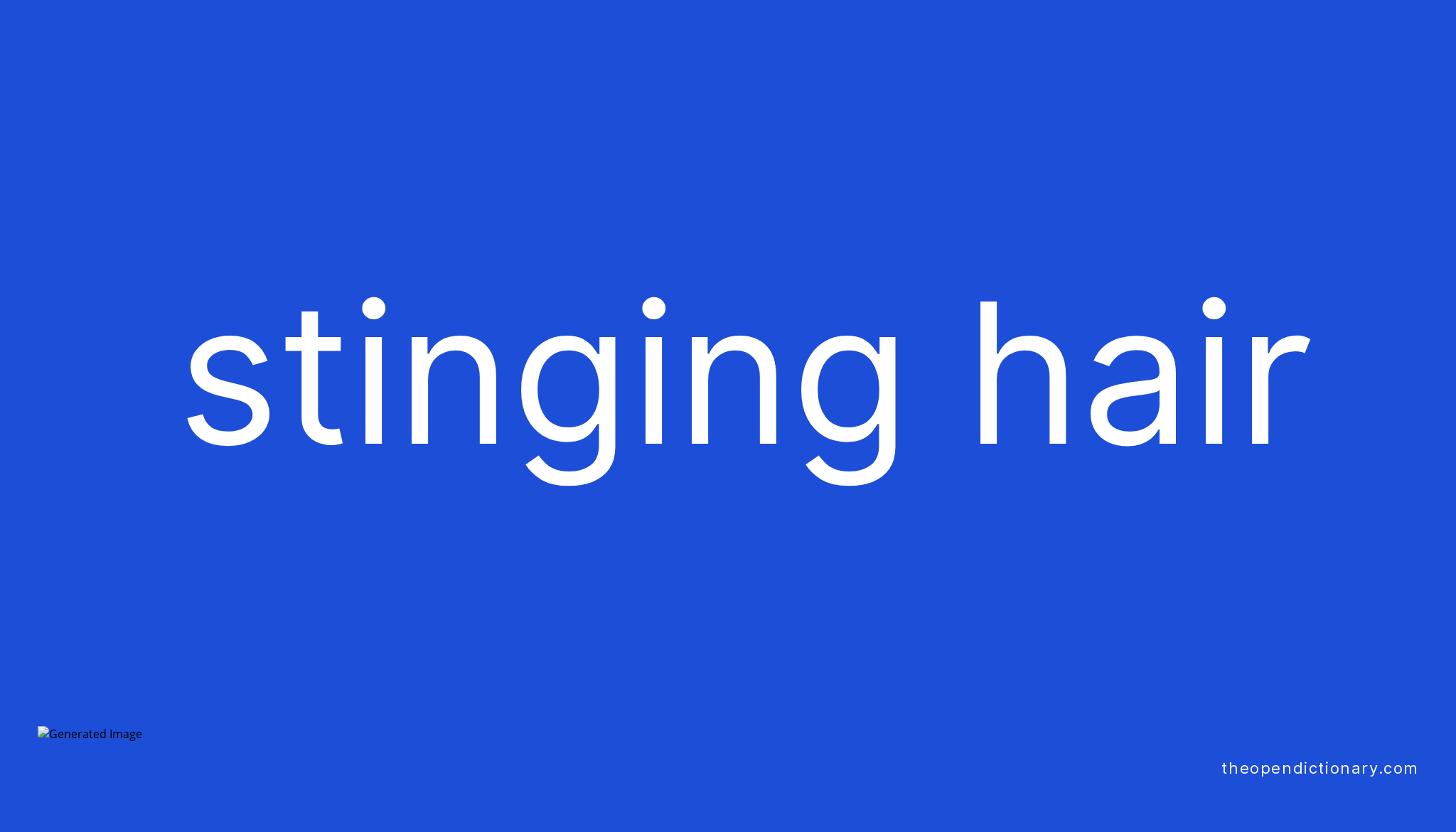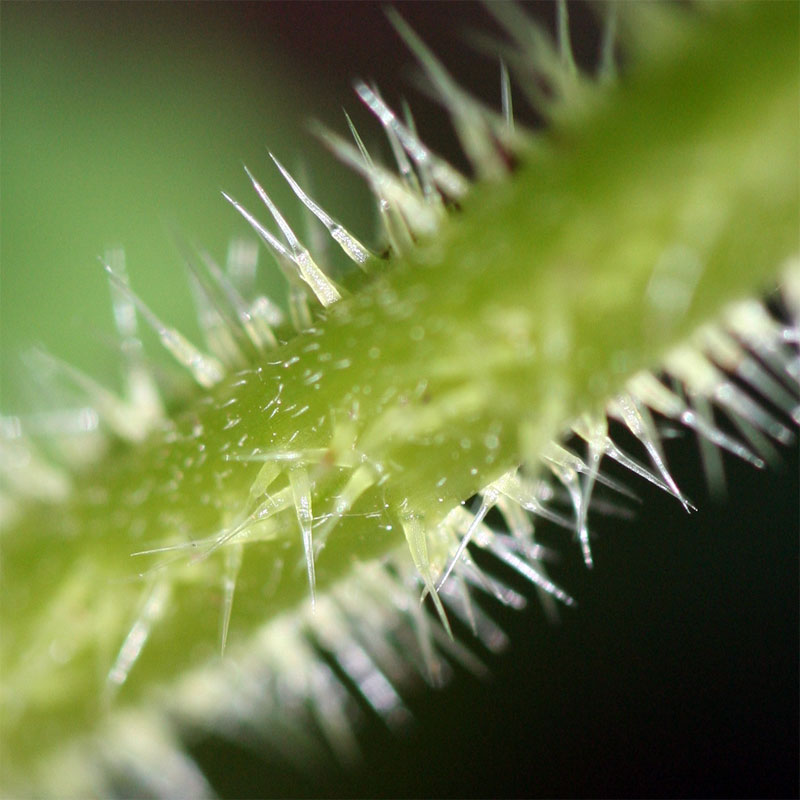Have you ever experienced the uncomfortable sensation of hair dye stinging your head? This issue is more common than you might think and can be a real concern for many people who want to color their hair safely. Hair dye reactions can range from mild discomfort to severe irritation, depending on the individual’s scalp condition and the product used. Understanding the causes and solutions can help you avoid this unpleasant experience.
Whether you're a seasoned hair coloring enthusiast or a first-timer, it's essential to know what could potentially cause irritation and how to prevent it. This article will delve into the reasons why hair dye might sting your scalp and provide practical advice for minimizing discomfort. By the end, you'll have a better understanding of how to protect your scalp while achieving the hair color of your dreams.
We'll also explore expert tips, reliable sources, and actionable solutions to ensure your hair dyeing process is safe and enjoyable. Let's get started by examining the root causes of this issue and how you can address it effectively.
Read also:Dark Hair In The Summer A Comprehensive Guide To Embracing Your Style
Table of Contents
- Causes of Hair Dye Stinging My Head
- Symptoms and Signs of Scalp Irritation
- Biological Factors Contributing to Scalp Sensitivity
- Common Hair Dye Ingredients That Cause Irritation
- Prevention Strategies for Scalp Irritation
- Alternative Hair Dye Options for Sensitive Scalps
- Treating Scalp Irritation After Hair Dye
- Expert Tips for Minimizing Discomfort
- Debunking Common Myths About Hair Dye Irritation
- Frequently Asked Questions About Hair Dye Stinging My Head
Causes of Hair Dye Stinging My Head
Hair dye stinging your head can be attributed to several factors, ranging from chemical reactions to pre-existing scalp conditions. Understanding these causes is the first step toward preventing discomfort. One primary reason for this sensation is the presence of harsh chemicals in many hair dye formulations. These chemicals can penetrate the scalp, leading to irritation or an allergic reaction.
Another contributing factor is the condition of your scalp. If your scalp is already dry, damaged, or inflamed, it may be more prone to irritation when exposed to hair dye. Additionally, certain individuals may have heightened sensitivity to specific ingredients commonly found in hair dyes, such as ammonia or paraphenylenediamine (PPD).
Environmental Factors
Beyond the ingredients in the dye itself, environmental factors can also play a role in scalp irritation. For example, exposure to extreme temperatures, pollution, or even excessive sun exposure can weaken the scalp's natural barrier, making it more susceptible to irritation during the hair dyeing process.
Symptoms and Signs of Scalp Irritation
Recognizing the symptoms of scalp irritation is crucial for addressing the issue promptly. Common signs include itching, redness, swelling, and a burning sensation. If you experience any of these symptoms after applying hair dye, it's important to take immediate action to alleviate the discomfort.
In severe cases, individuals may develop contact dermatitis, a condition characterized by intense itching, blisters, or peeling skin. If you notice any of these advanced symptoms, it's advisable to seek medical attention to prevent further complications.
How to Identify Severe Reactions
- Intense burning or stinging sensation
- Visible red patches or blisters on the scalp
- Persistent itching that does not subside
- Swelling around the hairline or face
Biological Factors Contributing to Scalp Sensitivity
Some individuals are inherently more prone to scalp sensitivity due to biological factors. These can include genetic predispositions, hormonal changes, and underlying health conditions. For instance, individuals with eczema, psoriasis, or other chronic skin conditions may find that their scalp is more reactive to hair dye.
Read also:Liv Morgans Signature Style The Rise Of Jean Shorts
Hormonal fluctuations, particularly in women, can also affect scalp sensitivity. During pregnancy or menopause, changes in hormone levels can alter the scalp's natural pH balance, making it more vulnerable to irritation from hair dye products.
Genetic Predisposition
Research has shown that certain genetic traits can increase an individual's likelihood of experiencing scalp irritation. If you have a family history of sensitive skin or allergies, you may want to take extra precautions when choosing hair dye products.
Common Hair Dye Ingredients That Cause Irritation
Many hair dye formulations contain ingredients that can trigger scalp irritation. Some of the most common culprits include ammonia, PPD, resorcinol, and hydrogen peroxide. These chemicals are used to lift the hair cuticle and deposit color, but they can also cause discomfort for individuals with sensitive scalps.
Ammonia, in particular, is known for its strong smell and potential to irritate the scalp. Many modern hair dyes now offer ammonia-free alternatives, which can be a gentler option for those with sensitive skin. However, it's important to note that even ammonia-free dyes may still contain other ingredients that can cause irritation.
Understanding Ingredient Labels
When selecting a hair dye, always read the ingredient label carefully. Look for formulations that are free from harsh chemicals and opt for products specifically designed for sensitive scalps. Additionally, consider performing a patch test before applying the dye to your entire head to ensure you don't have an adverse reaction.
Prevention Strategies for Scalp Irritation
Preventing scalp irritation starts with proper preparation and product selection. Begin by ensuring your scalp is healthy and hydrated before applying hair dye. You can achieve this by using a nourishing scalp treatment or a gentle moisturizing shampoo in the days leading up to your dye session.
Another effective prevention strategy is to conduct a patch test. Apply a small amount of the dye to a discreet area of your skin, such as behind your ear, and wait 48 hours to see if any irritation develops. If no reaction occurs, you can proceed with confidence.
Choosing the Right Product
Selecting the right hair dye is crucial for minimizing scalp irritation. Look for products labeled as "gentle," "sensitive scalp-friendly," or "ammonia-free." These formulations are often designed to reduce the risk of irritation while still delivering vibrant color results.
Alternative Hair Dye Options for Sensitive Scalps
For individuals with particularly sensitive scalps, there are several alternative hair dye options available. Natural dyes, such as henna or plant-based formulations, can be a great choice for those looking to avoid harsh chemicals. These dyes often provide subtle color changes and can even promote scalp health by delivering nourishing ingredients.
Temporary or semi-permanent dyes are another option worth considering. These products typically contain fewer harsh chemicals than permanent dyes and can provide a gentler coloring experience. However, they may require more frequent applications to maintain color vibrancy.
Professional Guidance
If you're unsure which alternative dye to choose, consulting a professional stylist can be incredibly helpful. A knowledgeable stylist can recommend products tailored to your specific needs and provide expert advice on achieving your desired color results safely.
Treating Scalp Irritation After Hair Dye
If you experience scalp irritation after applying hair dye, there are several steps you can take to alleviate the discomfort. Begin by rinsing your scalp thoroughly with cool water to remove any residual dye. Follow up with a soothing scalp treatment or a hydrocortisone cream to reduce inflammation and itching.
In severe cases, it may be necessary to seek medical attention. A healthcare professional can prescribe topical or oral medications to address the irritation and prevent further complications. Remember to avoid scratching or rubbing your scalp, as this can worsen the condition and lead to infection.
Home Remedies
- Apply a cold compress to reduce swelling and numb the area
- Use aloe vera gel to soothe irritated skin
- Moisturize with a gentle, fragrance-free lotion
Expert Tips for Minimizing Discomfort
Here are some expert tips to help you minimize discomfort during and after the hair dyeing process:
- Choose high-quality, reputable hair dye products
- Follow the instructions carefully and avoid leaving the dye on for longer than recommended
- Wear gloves to prevent the dye from coming into contact with your skin
- Rinse your scalp thoroughly after application
Additionally, consider booking your hair dyeing session with a professional stylist who can ensure the process is as gentle and comfortable as possible.
Debunking Common Myths About Hair Dye Irritation
There are several myths surrounding hair dye irritation that can lead to confusion and misinformation. For example, some people believe that switching to natural dyes will completely eliminate the risk of irritation. While natural dyes can be gentler, they are not entirely free from potential allergens.
Another common myth is that rinsing your hair with vinegar can neutralize the effects of harsh chemicals. While vinegar can help balance your hair's pH, it is not a substitute for proper treatment if irritation occurs.
Separating Fact from Fiction
Always rely on trusted sources for information about hair dye safety. Consult dermatologists, professional stylists, or reputable health websites for accurate advice on preventing and treating scalp irritation.
Frequently Asked Questions About Hair Dye Stinging My Head
Q: Can I dye my hair if I have a sensitive scalp?
A: Yes, but it's important to choose products specifically formulated for sensitive scalps and perform a patch test before application.
Q: How long should I wait to shampoo after dyeing my hair?
A: Most experts recommend waiting at least 48 hours to allow the color to set properly.
Q: Are natural hair dyes safer than chemical dyes?
A: Natural dyes can be gentler, but they may still contain allergens. Always test for sensitivity before use.
Kesimpulan
Hair dye stinging your head can be an uncomfortable and concerning experience, but with the right knowledge and precautions, it can be minimized or even avoided altogether. By understanding the causes of scalp irritation, choosing the appropriate hair dye products, and following expert tips, you can safely achieve the hair color of your choice.
We encourage you to share your thoughts and experiences in the comments section below. Additionally, feel free to explore other articles on our site for more tips and advice on maintaining healthy hair and scalp. Together, we can create a community dedicated to safe and effective hair care practices!



